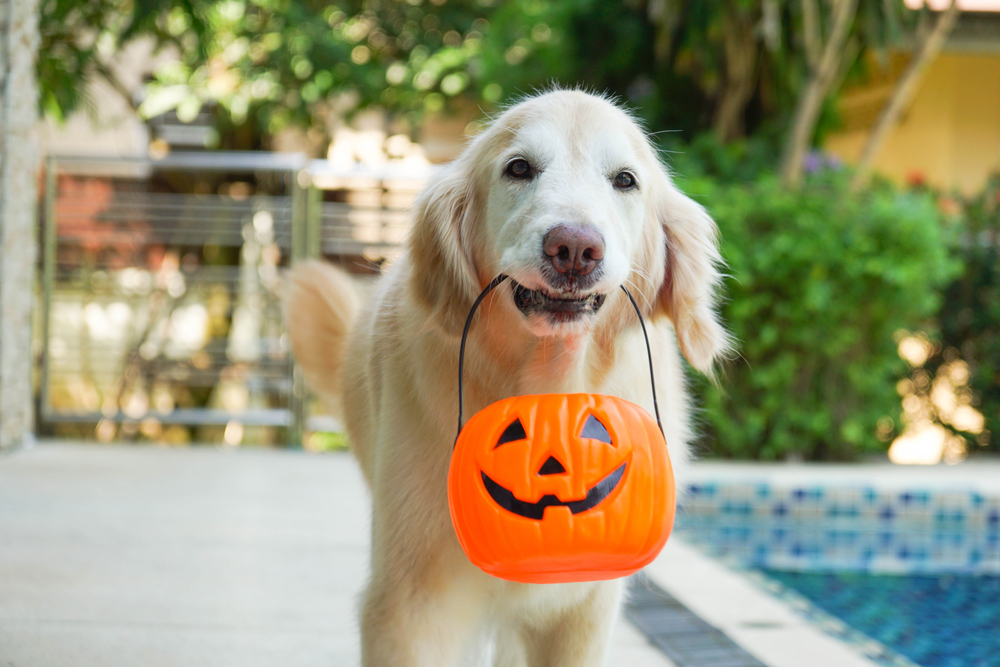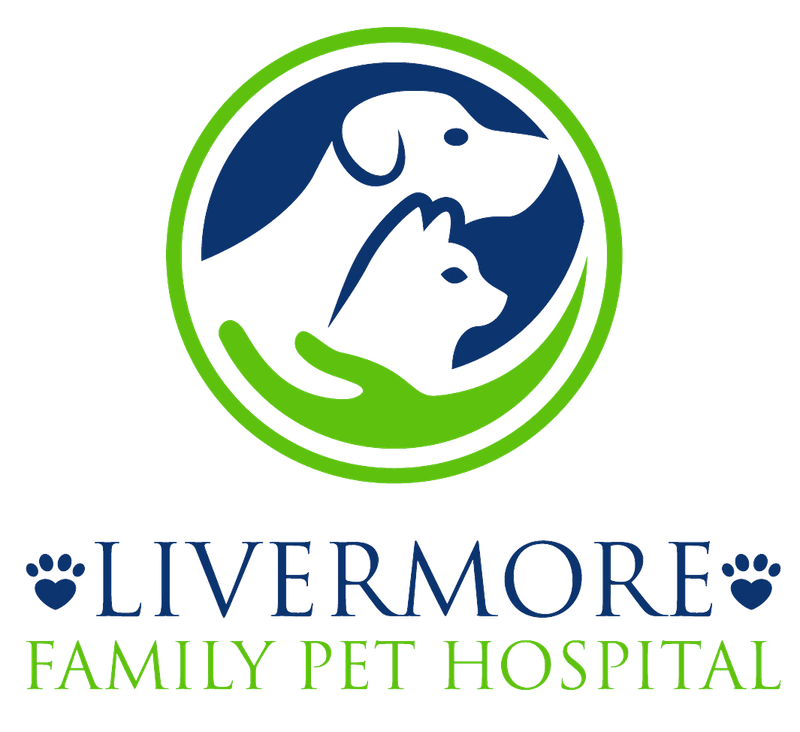
According to the National Retail Foundation, Americans spent almost half a billion dollars on pet Halloween costumes in 2019. And, while the Livermore Family Pet Hospital team can’t say for certain that every one of the estimated 29 million dogs and cats enjoyed dressing up as hot dogs, unicorns, or cowboys, we can help you ensure your pet has a safe—if not entirely happy—Halloween. Here are our top tips for avoiding the most common pet Halloween hazards.
#1: Bittersweet dangers—Halloween candy and pets
Pets can’t resist sweet temptations any more than people—but, unfortunately, many popular sweets pose serious health risks for dogs and cats. These include:
- Chocolate — Chocolate contains theobromine and caffeine, which are stimulant-like ingredients that trigger changes in heart and nervous system function. Although dark and bitter chocolate (e.g., baking chocolate) have the greatest toxicity level, you should avoid chocolate in any form or quantity to protect your pet from gastrointestinal upset (e.g., vomiting and diarrhea) and pancreatitis.
- Xylitol — Xylitol is a natural sweetener commonly found in sugar-free candy, gum, baked goods, and some prepackaged snack foods. Xylitol causes sudden and severe hypoglycemia (i.e., low blood sugar) in dogs, and can lead to acute liver failure.
- Raisins — Raisins, grapes, and currants can cause kidney failure in some dogs. Raisins are frequent Halloween treats in lieu of candy or as chocolate-covered delights, and the eyeball-like texture of peeled grapes make them common Halloween party attractions, but keep them away from your pet.
- Macadamia nuts — Dogs who consume macadamia nuts may experience neurological signs, including coordination difficulties, muscle tremors, and an inability to walk. The high fat content in macadamia nuts also may lead to pancreatitis—a painful inflammatory condition that requires hospitalization.
- Wrappers — Colorful, shiny candy wrappers can enchant curious cats, while indiscriminate dogs may eat the wrapper in their haste to consume the candy. When ingested, these wrappers can form an intestinal blockage that requires surgical removal.
Keep all candy out of your pet’s reach and store any leftovers in closed containers. If you know or suspect your pet has ingested a toxic item, immediately contact Livermore Family Pet Hospital or call the ASPCA Animal Poison Control Center for after-hours care. Do not induce vomiting without a veterinary professional’s instructions.
#2: Running scared—pet escape
Ringing doorbells, unfamiliar ghouls and goblins, sudden noises, and spooky decorations can send the most resilient pets into a tailspin. Frightened pets may respond to their natural flight instinct, and run from their fear, slipping outside and quickly becoming disoriented by giant Halloween lawn ornaments, unrecognizable trick-or-treaters, and strange shadows.
When making Halloween plans, consider your pet’s typical responses to strangers, noise, and environmental changes. If you think they may feel threatened, frightened, or stressed, consider confinement in a quiet, low-traffic area in a crate, pen, or secure room to prevent accidental escape. Give your pet a long-lasting treat, puzzle toy, or chew to distract and preoccupy them during the main event. Most importantly, ensure your pet wears a well-fitted collar with up-to-date identification tags, is microchipped, and their information is current. If your pet isn’t microchipped, schedule an appointment at Livermore Family Pet Hospital.
#3: Well-disguised threat—pet costume hazards

If your Halloween traditions include dressing up your pet, you’ll want to check their costume for any hindrances to natural movement or breathing. Compressive or restrictive garments can create stress or anxiety, so always introduce your pet to their costume several days or weeks in advance to ensure a correct fit and your pet’s comfort. Identify and remove any potential hazards, including:
- Ties, belts, or string — These can cause choking if the pet becomes entangled or ingests a linear foreign body.
- Small accessories — Pets may chew on or consume decorative items such as beads, buttons, and jewelry.
- Loose or long fabric — Pets may trip over or become entangled in the fabric.
- Poorly fitted hood, hat, or glasses — These may obstruct your pet’s vision and they may fall or panic.
Watch your costumed pet for any stress signs, including panting, refusing to move or moving slowly, lip licking, or repetitious yawning, and remove the costume if they show any concerning signs. If you’ll be taking your costumed pet trick-or-treating, add reflective tape to their costume, or use a reflective collar and leash to increase visibility.
#4: Haunted house—Halloween decor and pets
Spooky decorations can set the Halloween scene, but these fun and festive frights can also attract your curious pet and create a real house of horrors. Consider replacing these traditional Halloween favorites with pet-safe alternatives:
- Candles — Candles not only create an air of mystery—they also are a risk for singed whiskers, burned paws, and accidental fire.
- String lights — Pets may bite the wiring or chew on glass or plastic bulbs.
- Figurines — Small holiday figurines are the perfect size for an intestinal blockage.
- Glass ornaments — Broken glass may cut paw pads or your pet’s gums.
- Liquid potpourri or essential oils — Many liquid potpourri and essential oils, including fall favorites such as cinnamon, birch bark, pine, and citrus, are toxic to cats, who absorb the oils through their skin and mucous membranes, which can lead to liver failure.
If you’re reading this, your Halloween plans—like 20% of all Americans—likely already include your pet. But don’t stop at costume selection—take the above steps to help ensure your pet’s safety and comfort on the spookiest night of the year. If you have additional pet safety questions, need to schedule an appointment, or—hopefully not!—something goes awry this Halloween, contact Livermore Family Pet Hospital.

